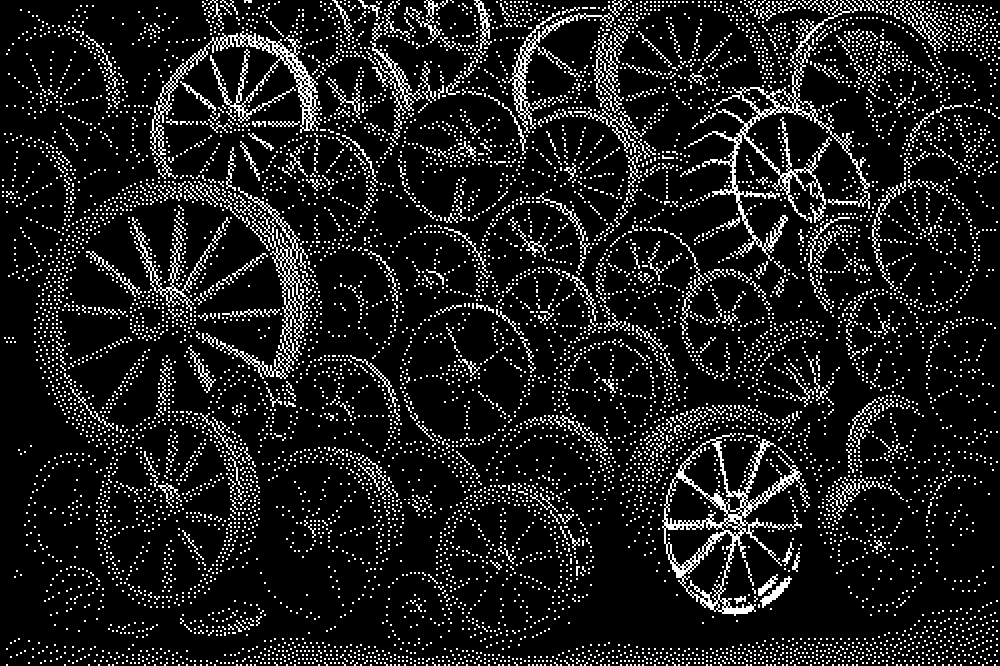Lunchbox or (The Discreet Charm of Wheel Reinventors)
This is the story of how I built a ui utility library that almost broke me and what I learned about building, breaking, and beginning again.
- 20 minute read
- Published 6 months ago

Have you ever seen the European guy who spent a few years around 2016 building a new musical instrument from scratch? His artist name is Wintergatan, and he would wind it up after feeding it thousands of metal marbles. Each marble would travel along the inner pathways of the machine, eventually collapsing onto a sound-making material. He called it the "Marble Machine." It represents one side of the duality of how I feel about this project.
It was an interesting project to watch him build, and even his most recent development, the "Marble Machine 3," is cool enough. Sometimes a piece of the machine would break and need replacing with an identical part, but more often, he found the replacements insufficient. A part could perform deceptively well only to fail under harsher circumstances, requiring a slight redesign. Watching his progress videos was always worthwhile; he was constantly fixing things, solving problems, making mistakes, and redesigning.
Recently, I've felt that this project and I share a similar dynamic. It has taught me so much, from the raw technologies that make up the web to the frameworks that abstract them. But if the Marble Machine, with its endless backlog of redesigns, represents one side of the spectrum, what is the other side?
Do you remember the early Malcolm in the Middle? There's an episode where Hal (Malcolm's dad) faces a midlife work crisis after being questioned by kids at his son's school about his boring job. He takes a leave of absence from work by lying about a kidney problem and spends the following weeks creating a mysterious painting in the family garage. The entire episode revolves around the concept of employment. Hal's crisis is the main plot, but Lois forces Francis to do unfulfilling work at the Lucky Aid market, and Malcolm struggles with choosing his future career path.
Recent author comments
Back in 2017 when I wrote "On Telling Stories", I had Design all over my mind at the time. I was very serious about the impact good design has on modern life. I felt like many poor human experiences came from fails in Design practices. Design englobed every single decision on the production of almost anything in modern day-to-day-life. Things like traffic, crowded movie theaters, renewing your passport, retail work, etc where like that because of poor design, which itself has infinite causes like incompetence, disinterest, impatience, or greed. This huge space in my mind occupied by Design, there's a certain bias on the original idea of this article, and on retrospective, it makes it look as if storytelling was merely a device or dimension of the Design practice. But really, for me, the art of telling stories is something even more profound than that, so I had to make an update.
Commented 6 months ago, on On Telling Stories
I feel like the following thought process is a strange one. There has been tons of "new AI _buzzword_ startups that create the new _buzzword_ tool that _buzzwords_ this and that." and even tons more of "it's just a _something_ wrapper" responses. The problem is that most of these tools speak so little the language of the common user that they never truly enter the masses, even the ones within it's own niche. Who cares if it is a measly "wrapper"? As long as common people get to be able to understand it, worse than this is a non-wrapper product that only a few select group of people get it.
Commented 8 months ago, on The Wrapper is the Product
this version fuses two older posts into one clean arc. nothing cut, just stitched together in order. first bit sketches the why of the app: ditching doc-brain for idea-first. nods to bullet journal + zettelkasten. explains core features + motives. second bit dives into the how: MVP limits (no styling, images, collab), then tees up next steps—mobile, tags, threads, timelines. keeps the flow from theory to roadmap, so readers get the full drift start to now.
Commented 8 months ago, on On Notes